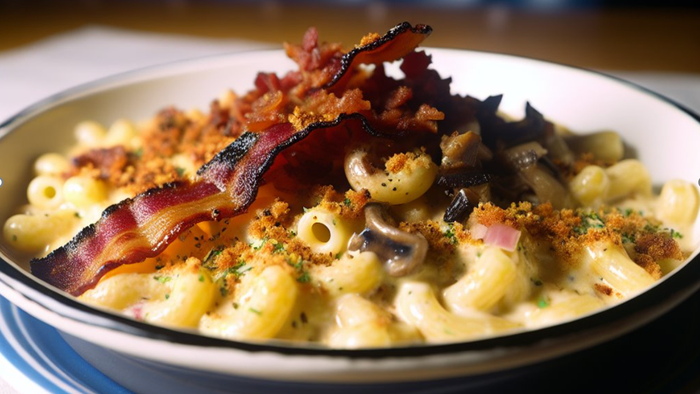Three Ways To Overcome Back Of House Scalability BottlenecksThree Ways To Overcome Back Of House Scalability Bottlenecks
Three Ways To Overcome Back Of House Scalability Bottlenecks

The catering front of house has matured and streamlined in recent years, with BEO platforms, payments systems, and easy-to-use websites removing heaps of friction for operators and customers. In most cases, these systems are set up once, require minimal maintenance, and scale automatically.
The back of house could never.
Catering does not scale linearly, and as businesses grow, so does the back of house complexity. Increasing a service from 100 to 200 heads, or going from three events per week to six, doesn’t require doubling efforts. It means recalibrating your entire inventory, rethinking your staffing levels, adjusting production schedules, and maybe even reinventing your menu.
The natural growth ceiling this complexity creates puts a halt to the development of many catering businesses, as the operational burden sucks up resources and inefficiencies grow larger. But it doesn’t have to be that way.
Three systems caterers need in order to scale the back of house
Caterers that blow past the typical growth ceilings have well-oiled back of house operations that rely less on assumptions, and more on data-driven planning. Here are three systems we’ve seen successful caterers adopt to open up their bottlenecks.
1. Food data capture: taking the data-driven path
The margin for error is shrinking across all foodservice business models. Costs are up and competition is high. Assumptions that have worked for us for decades no longer make the cut. Caterers that will survive the next few years will prioritize building a data-driven back of house.
Start by developing a culture where every recipe, menu plan, inventory change, costing calculation, and vendor price is meticulously documented. Store this data in a centralized system that integrates with your other operational tools.
The goal here is seamless accessibility and interconnectivity, so everyone from your chefs to your accountants can pull the data they need to make informed decisions. Data that is hard to access, like in static/siloed slide decks or spreadsheets, keeps it from being usable.
Food data that’s captured can immediately be used for more accurate costing, planning, and production, but it’s also a long-term bet. Once your data is structured and centralized, you're primed to layer on AI tools that can automate tasks and spot efficiency gains that would be difficult to notice by a busy chef. Though we are early in the age of AI, it’s clear that AI-powered operations will perform at higher levels (and margins) in the near future.
2. Real-time food costing: know your profits before the first dish is served
We’ve all been there—crafting a menu, delivering a great experience, and praying the numbers add up favorably when you finally get the chance to add up the real costs. It’s like cooking without tasting along the way, but for your finances.
In our volatile market, static costing methods can't keep up with the changing prices of food. Forget fixed $30, $40, $50 plates and crossing your fingers that ingredient costs don’t rise enough to eat all your margin. Many culinary operating systems can link up with vendors through EDI connections that give you real-time pricing, then use that data to give you accurate food cost calculations.
When you can see real-time costs in advance of an event, you can adjust your menu offerings that work for both your customer’s preferences and your profit margins. Offer a higher-margin item when vendor prices spike. Create bespoke menus with financial certainty. Your menu becomes a fluid, profit-maximizing tool.
3. Smart production scaling: accomplishing more with less
Throwing more cooks in the kitchen doesn’t solve the scaling problem—at least, not until you’ve identified ways to optimize planning, purchasing, and production. Before you bulk up your team and labor costs, use food data to guide your production processes.
Accurate menu planning on the fly. There’s often not enough time to manually recreate plans for different event sizes and types (and especially last-minute headcount changes!). Culinary operating systems can help scale menus based on recipe data. Doing this by hand, or with stitched-together spreadsheets, is too burdensome.
Purchasing just what you need. The consequences of under-purchasing, and the subsequent pressure to over-purchase, just in case, destroys a lot of margin in catering. Many culinary operating systems can connect inventory tools, sales data, and menu plans to automatically create optimized purchase orders that just need a quick review.
Scaling production the smart way. Production scaling is about getting the right hands doing the right things. One of the best ways to do this is to document your recipe creation processes, then use task allocation algorithms to create production guides based on staffing resources, recipes, and orders of operation (like having to batch prep marinara sauce before assembling chicken parm).
The game has changed. The back of the house is becoming the secret sauce of competitive differentiation in the catering business. There's a widening gap between businesses that have harnessed real-time data, production scalability, and a data-driven culture, and those still running off of spreadsheets and gut feelings.
As we move further into a world where efficiency isn't a luxury but a necessity, optimizing your back of the house isn't just about avoiding the chaos of growth; it's about ensuring your place in the future of catering.







